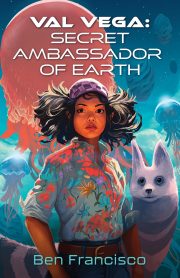Writer’s Guide to Twine
by Aidan Doyle
 Twine was created by Chris Klimas in 2009 and is “an open-source tool for telling interactive, nonlinear stories.” Simply put, it’s a program that makes it easier for writers to make their own “Choose Your Own Adventure” style fiction. There are a number of tools for writing interactive fiction, but Twine is one of the simplest and most popular.
Twine was created by Chris Klimas in 2009 and is “an open-source tool for telling interactive, nonlinear stories.” Simply put, it’s a program that makes it easier for writers to make their own “Choose Your Own Adventure” style fiction. There are a number of tools for writing interactive fiction, but Twine is one of the simplest and most popular.
Interactive Fiction (IF) comes in many forms, including text-based parser games such as Zork where the player types in commands (Go north. Eat chocolate. Talk to green wizard). If you want to make this style of game, then Inform is probably your best option. Ken Liu’s Clockwork Soldier is an example of a traditional story which has IF-like commands embedded within it.
In contrast, stories written in Twine generally present the reader with choices in the form of hypertext links. Although there are many systems available for writing IF, Twine in particular has been celebrated for its ease of use. Twine is more focused on stories as opposed to games and produces HTML files, allowing anyone with a modern browser to read your story.
Marginalized communities have also adopted twine. In an interview with The Guardian, Twine author Anna Anthropy said: “If you can write a story, you can make a Twine game. A lot of people have been making all this weird amazing stuff. Someone made a Twine game, In Memoriam, for his dead brother. Someone made a Twine game about what it’s like to come out as bi in a lesbian community and be re-closeted. Someone made a game about what it’s like to sacrifice to the devil and receive a strange new pneumatic body with which you take over the world. Twine is this amazing queer and woman-orientated game-making community that didn’t even exist a year ago.”
To see what Twine is capable of doing I recommend having a look at Michael Lutz’ creepy psychological horror story My Father’s Long, Long Legs and the equally disturbing The Uncle Who Works For Nintendo Author Porpentine is known for her poetic mood pieces, such as Their Angelical Understanding which boasts the wonderful opening line: “I train to fight angels in a monastery by the sea.” Her story Neon Haze also features similarly memorable lines.
Perhaps the most famous Twine game is Zoe Quinn and Patrick Lindsey’s Depression Quest described as “an interactive (non) fiction about living with depression” that gives the reader choices illustrating how difficult it can be to deal with depression.
sub-Q and Strange Horizons are two magazines that pay pro rates for short IF. sub-Q is an online magazine devoted to IF and has published stories by genre writers including E. Lily Yu (The Tower and the Toucan) and JY Yang (Before the Storm Hits. Strange Horizons occasionally publishes IF such as Bogi Takács’ You Are Here. Both magazines are looking for shorter works rather than sprawling epic games. Traditionally IF games have been written in second person (“You are standing in an open field west of a white house”) whereas sub-Q prefers stories written in first or third person.
The Interactive Fiction Competition (IFComp) is an annual (unpaid) competition showcasing the work of IF entries and has been running for more than twenty years. It caters to both parser games such as those written in Inform, as well as the increasingly popular choice style Twine games.
Other options for publishing your IF include making it available via indy game sites such as itch.io or bundling them as apps for mobile devices (although publishing things in the App Store requires you to have a developer account and is a more complicated process). Alternatives to Twine include Choice of Games’ Choice Script and Ink, which was used to produce 80 Days.
For a more complete introduction to the world of IF see Yoon Ha Lee’s article in Strange Horizons, Emily Short’s Guide to Writing IF, Brass Lantern or The Short Game’s podcast episode on IF.
One of the things readers often look for in story-driven IF is for their choices to be meaningful. It’s generally not a good idea to present a reader with twenty different things to choose from, none of which have any impact on the rest of the game. If the story makes a big deal about whether I choose to ride a t-rex or a triceratops to work it can be annoying if that choice isn’t mentioned in the rest of the story. The Mass Effect games are more RPG than IF, but one of the reasons they were so popular is they allowed you to make decisions about which characters survived and these decisions changed how other characters reacted to you, even extending beyond the first game into later games in the series. Of course there are always exceptions. Adam Cadre’s Photopia is a modern IF parser game classic (a poll of intfiction.org readers voted it best IF of all time, but some people don’t like it because their choices “don’t matter.” The more choices you present in a game, the more complicated it becomes, especially when you have multiple branching endings. Until you’re more experienced with writing IF, it’s a good idea to start with something simple.
Want to learn Twine? Here’s my introductory guide.
•••
Aidan Doyle (@aidan_doyle) is an Australian writer and computer programmer. He has visited more than 90 countries and his experiences include teaching English in Japan, interviewing ninjas in Bolivia, and going ten-pin bowling in North Korea. His stories have been published in Lightspeed, Strange Horizons, and Fireside, and he has been shortlisted for Australia’s Aurealis Award.


